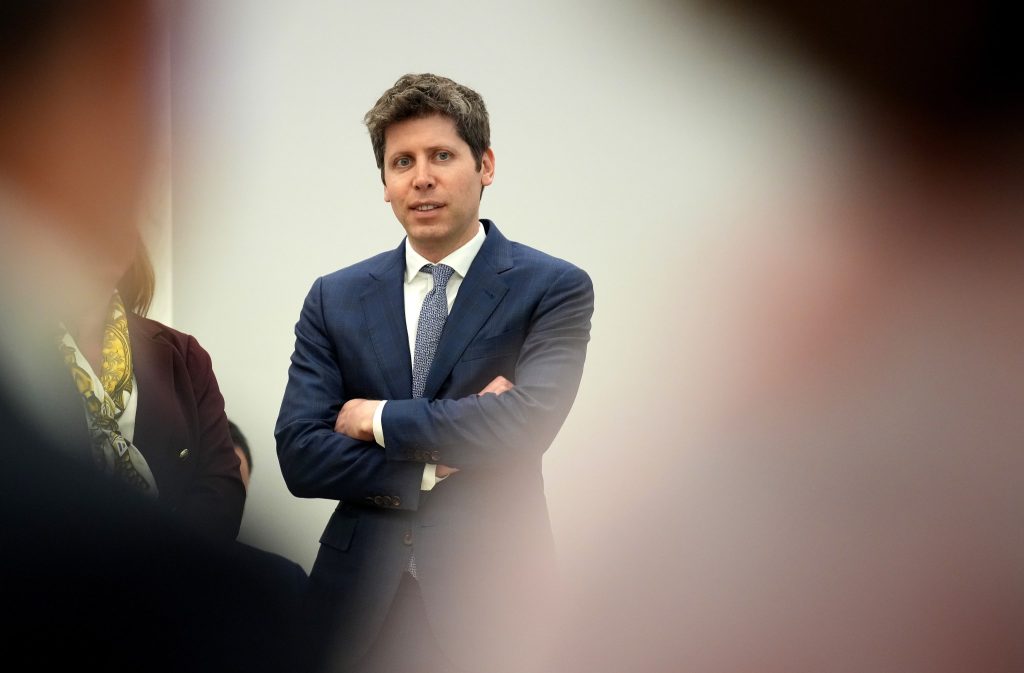It’s an epochal moment as history’s latest general-purpose technology, AI, forms itself into an industry. Much depends on these early days, especially the fate of the industry’s leader by a mile, Open AI. In terms of the last general-purpose technology, the internet, will it become a colossus like Google or be forgotten like AltaVista?
No one can know, but here’s how to think about it.
OpenAI’s domination of the industry is striking. As the creator of ChatGPT, it recently attracted 78% of daily unique visitors to core model websites, with six competitors splitting up the rest, according to a recent 40-page report from J.P. Morgan. Even with that vast lead, the report shows, OpenAI is expanding its margin over its much smaller competitors, including even Gemini, which is part of Google and its giant parent, Alphabet (2024 revenue: $350 billion).
The great question now is whether OpenAI can possibly maintain its wide lead (history would say no) or at least continue as the industry leader. The answer depends heavily on OpenAI’s moat, a Warren Buffett term for any factor that protects the company and cannot be easily breached–think of Coca-Cola’s brand or BNSF Railroad’s economies of scale, to mention two of Buffett’s successful investments. On that count the J.P. Morgan analysts are not optimistic.
Specifically, they acknowledge that while OpenAI has led the industry in innovating its models, that strategy is “an increasingly fragile moat.” Example: The company’s most recent model, GPT-5, included multiple advances yet underwhelmed many users. As competitors inevitably catch up, the analysts conclude, “Model commoditization is an increasingly likely outcome.” With innovations suffering short lives, OpenAI must now become “a more product-focused, diversified organization that can operate at scale while retaining its position” at the top of the industry–skills the company has yet to demonstrate.
Bottom line, OpenAI can maintain its leading rank in the industry, but it won’t be easy, and betting on it could be risky.
Yet a different view suggests OpenAI is much closer to creating a sustainable moat. It comes from Robert Siegel, a management lecturer at Stanford’s Graduate School of Business who is also a venture capitalist and former executive at various companies, many in technology. He argues that OpenAI is already well along the road to achieving a valuable attribute, stickiness: The longer customers use something, the less likely they are to switch to a competitor. In OpenAI’s case, “people will only move to Perplexity or Gemini or other solutions if they get a better result,” he says. Yet that becomes unlikely because AI learns; the more you use a particular AI engine, the more it learns about you and what you want. “If you keep putting questions into ChatGPT, which learns your behaviors better, and you like it, there’s no reason to leave as long as it’s competitive.”
Now combine that logic with OpenAI’s behavior. “It seems like their strategy is to be ubiquitous,” Siegel says, putting ChatGPT in front of as many people as possible so the software can start learning about them before any competitor can get there first. Most famously, OpenAI released ChatGPT 3.5 to the public in 2022 for free, attracting a million users in five days and 100 million in two months. In addition, the company raised much investment early in the game, having been founded in 2015. Thus, Siegel says, OpenAI can “continue to run hard and use capital as a moat so they can do all the things they need to do to be everywhere.”
But Siegel, the J.P. Morgan analysts, and everyone else knows plenty can always go wrong. An obvious threat to OpenAI and most of its competitors is an open-source model such as China’s DeepSeek, which appears to perform well at significantly lower costs. The venture capital that has poured into OpenAI could dry up as hundreds of other AI startups compete for financing. J.P. Morgan and Siegel agree that OpenAI’s complex unconventional governance structure must be reformed; though a recently proposed structure has not been officially disclosed, it is reportedly topped by a nonprofit, which might worry profit-seeking investors.
As for moats, OpenAI is obviously in the best position to build or strengthen one. But looking into the era of AI, the whole concept of the corporate moat may become meaningless. How long will it be, if it hasn’t been done already, before a competitor asks its own AI engine, “How do we defeat OpenAI’s moat?”
This story was originally featured on Fortune.com







